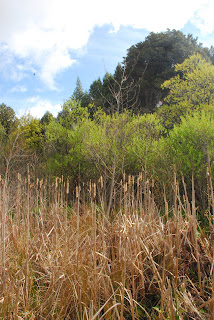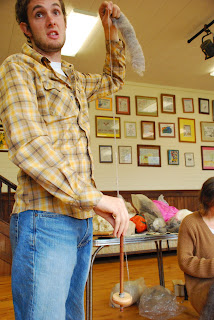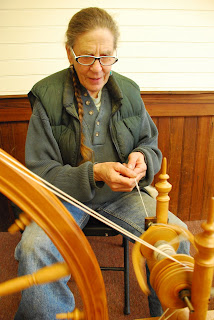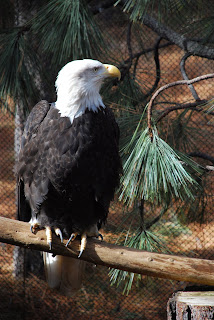Friday dawned even windier than Thursday. Our concrete contractor advised the concrete company to include an additional hour of retarder, which slows down the curing process. It produced the desired result...the concrete cured much more slowly, despite warmer temperatures and more steady and stronger winds. The crew worked at a much more relaxed pace over the entire day. And the floor looks fabulous.
Since pour day, we've been watering the slab multiple times daily to help it cure more slowly, which increases its final strength, and to reduce cracking, which has begun in a few areas. We labored over the decision of whether to put tension joints in the floor at the time of the pour, making it look like big tiles, or to cut joints in later. The cure rate of the floor decided for us on Day 1, and the fact that we don't have the tool means that we are just going to watch it crack. So far, they are very organic looking, and I think the end effect will be pleasing to the eye.
Drew removed the form boards yesterday, revealing the formed bullnose on the edge of the upper slab. This will be the upper of two steps that will lead from the upper level to the lower level living room, kitchen, and dining room. Our friend (and electrician) Karl got Drew going on the electrical, which is our next step before wall block stacking. Folks, we are on a roll! Karl is pumped to get us moved in by Thanksgiving. At this point, I think that is a realistic goal.
I do admit to feeling a little conflicted over the use of all this concrete, not only in the foundation and slab, but in the walls as well. All my previous research and studies point to the high embodied energy of concrete, and thus its effects on global climate change and use of non-local materials. I've had to weigh this against the alternatives and consider our desires. The reasons for use come down to 1) convenience of method and delivery (common material with common expertise required), not to mention speed of creating the product (we have already been doing what I call glorified camping for 5 years...I am ready to stop! An earthen floor would have likely taken several months to complete.), 2) earthquake stability (we live in one of the most seismically active areas in the US), 3) extreme weather conditions that rot buildings (our rainfall is one of the highest in the lower 48, and with our winter storms, we have horizontal rain with winds of greater than 50 mph, sometimes for 24 hours or more at a stretch), and 4) we don't have a local source of clay, meaning that if we had gone for a more "groovy" method such as an earthen floor, we would have needed to import the clay. We did some calculations regarding the embodied energy, and as near as we can determine, if the slab performs as intended, as an insulated thermal mass, we will save many times the Btus in firewood that were expended in its creation. Amortized over the life of the house, I consider it to be a regenerative use of concrete. What do you think?











